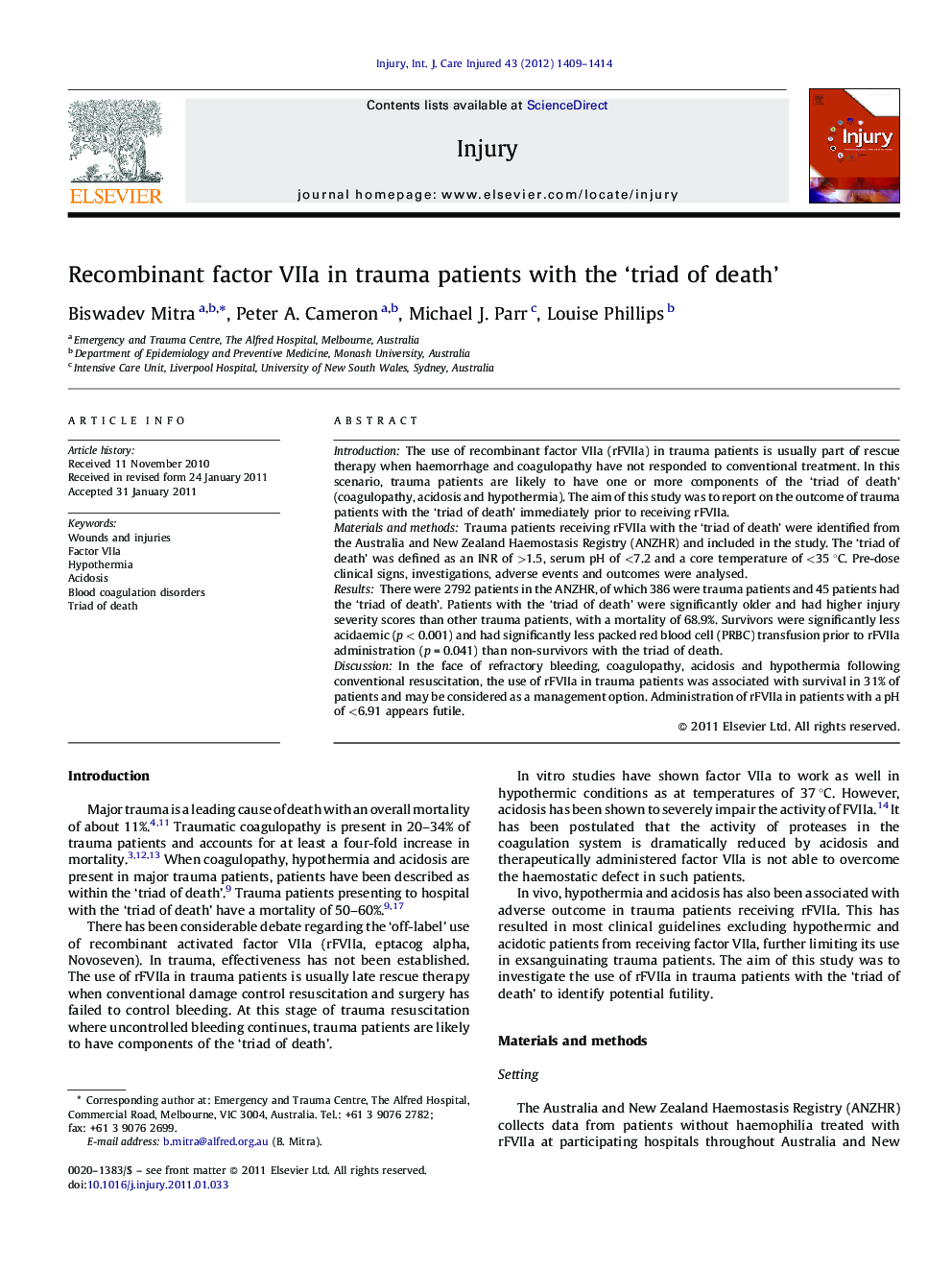| Article ID | Journal | Published Year | Pages | File Type |
|---|---|---|---|---|
| 6084453 | Injury | 2012 | 6 Pages |
IntroductionThe use of recombinant factor VIIa (rFVIIa) in trauma patients is usually part of rescue therapy when haemorrhage and coagulopathy have not responded to conventional treatment. In this scenario, trauma patients are likely to have one or more components of the 'triad of death' (coagulopathy, acidosis and hypothermia). The aim of this study was to report on the outcome of trauma patients with the 'triad of death' immediately prior to receiving rFVIIa.Materials and methodsTrauma patients receiving rFVIIa with the 'triad of death' were identified from the Australia and New Zealand Haemostasis Registry (ANZHR) and included in the study. The 'triad of death' was defined as an INR of >1.5, serum pH of <7.2 and a core temperature of <35 °C. Pre-dose clinical signs, investigations, adverse events and outcomes were analysed.ResultsThere were 2792 patients in the ANZHR, of which 386 were trauma patients and 45 patients had the 'triad of death'. Patients with the 'triad of death' were significantly older and had higher injury severity scores than other trauma patients, with a mortality of 68.9%. Survivors were significantly less acidaemic (p < 0.001) and had significantly less packed red blood cell (PRBC) transfusion prior to rFVIIa administration (p = 0.041) than non-survivors with the triad of death.DiscussionIn the face of refractory bleeding, coagulopathy, acidosis and hypothermia following conventional resuscitation, the use of rFVIIa in trauma patients was associated with survival in 31% of patients and may be considered as a management option. Administration of rFVIIa in patients with a pH of <6.91 appears futile.
